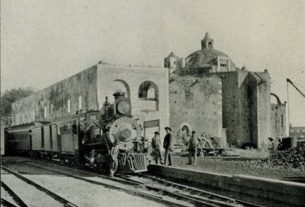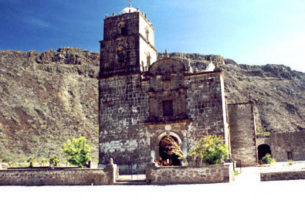As interviewed by A. McGillivray
Q: Jude tell us about yourself:
A: I was born in Chicago and grew up in the 50’s in a small suburb. I married young, had four kids, a son and three daughters. Fourteen years later in Seattle, I found myself divorced, enrolling as a freshman at University of Washington.
I spent eight very successful years as a student but they were very chaotic years, too, as a single mother of four teens whose lives played like scenes from ALMOST FAMOUS. Somehow we survived those tumultuous years, and I am now the almost respectable Nana Jude of six cherished grandchildren, three of them living near me in SMA.
Q: I understand you were a hair’s breadth away from finishing your Ph.D. thesis on Central American political history when you decided to give up academia and move to Mexico. Can you tell us about this decision and your subsequent move?
A: Actually, my field was political theory with a focus on revolution.
I was a crusader, very much wanting to change the world. But after a three month research trip in Chiapas, Salvador, Nicaragua, and Guatemala, studying political prisoners and refugee camps, I realized politics was not going to solve the many problems I considered important. I decided to change my own life instead of trying to save the world and left the Ph. D program to explore my potential as a poet and writer.
I acquired a license in massage therapy to support my experiment, and after struggling for four years in an increasingly trendy and expensive Seattle, decided to move to a place more nurturing of the artistic spirit. By great good fortune, I landed in San Miguel.
Q: You took up painting only after moving to San Miguel. How exactly did you come to pick up a paintbrush?
A: Yes, I thought I was coming to Mexico to write. I planned a one month visit to San Miguel de Allende to see if it would be a viable place to relocate, and I had one contact – an art teacher and friend of a woman I met in Nicaragua. She invited me to come to her workshop on creativity for women, and it was there I discovered an intense desire to express myself visually through color and form rather than words.
What happened next was for me, miraculous. I had trouble drawing a recognizable stick figure, but when I picked up a paint brush, images just began appearing on the paper, pouring forth from my brush.
Something in me was absolutely awakened.
When I returned to Seattle, determined to move to San Miguel within a few months. I showed my work to my literary agent. (I had a book pending with Hazelton Press). She insisted on putting my paintings in a gallery one of her successful writers was opening in a few weeks. The morning after the opening, she called me with the sad news that the book had been rejected but the amazing news that my paintings had sold to a well known collector in the area. This launched my career as an artist.
Q: Your work is extremely colorful with strong decorative patterning. Do you see the label of folk art as being appropriate for your style?
A: I think my work falls under the category of “outsider art”. I am a self-taught artist but not quite folk, although my work is very comfortable in an atmosphere of folk art. I’d like to think of myself as a naive painter like Henri Rousseau, but one does run the risk of being just ignorant instead of naive. (I think it a great mistake to take oneself too seriously.)
Q: What artists, Mexican or otherwise do you feel have influenced your work?
A: Since I have never formally studied art, I don’t believe I am greatly influenced by any particular artist. I learned about art as a young girl wandering around the Chicago art museum alone after ballet classes. What is unusual about my art, so I am told by more educated artists, is that I began painting with a unique style. I didn’t have to find my voice, it found me and demanded to be heard.
I do believe I have been greatly inspired by the vivid colors and patterns found in textiles all over Latin America. I collected quite a few examples during my travels as a student and have had them hanging on my walls ever since.
Q: I know that along with painting you have taken up flamenco dancing since your arrival in Mexico. Can you tell us a bit about yourself as a dancer?
A: I began studying flamenco seriously five years ago when Angela Garcia moved from the Distrito Federal to San Miguel and opened a flamenco school. I am an absolute fanatic about this art form. It is extremely challenging and rewarding and a wonderful counterbalance to the solitary sedentary painting. In addition to learning to dance and performing once in a while, I’ve begun to design and make my own costumes, which I find as satisfying as painting or any other creative activity. Actually, I find that it doesn’t matter what the medium is, just so long as most of my time can be spent in being creative.
Q: What influence does flamenco dancing have on your painting?
A: I have been painting a series of flamenco dancers inspired by a book of photos of gypsies from the late 1800’s. These, like most of my work, are very formally posed portraits, not the more familiar dancers in mid-swirl that most painters try to capture.
Q: I understand you have also recently been exploring religious icon painting in egg tempera. Tell us about your experience?
A: I was invited to participate in an icon group about a year ago. An artist friend of mine thought it would be a natural form since my paintings were so much like icons, a similarity that had never occurred to me. But after learning about icons, I found the characteristics of my painting to be strikingly similar. Icons are symbolic representations of the human form clothed in robes constructed of abstract geometrical shapes. My paintings are highly stylized versions of the human form, surrounded by and clothed in pattern and geometrical shapes. Neither are copies of reality but, rather, symbolic representations of an ideal. In both, the patterns are equally as important as the human forms represented.
Q: Do you feel that there is a difference in the way you approach the religious icons your approach to your other paintings.
A: Religious icons are painted as a prayer form in a state of meditation.
The devout seek revelation from the experience of painting a particular religious figure. Personally, all painting is a form of meditation and reveals some part of me formerly unknown. I began painting as a path to self-discovery, and I imagine all my paintings are in some way autobiographical. I think I have been painting icons all along, icons of my own inner spirituality instead of icons of an ancient religious tradition.
I imagine this new skill will inform my way of seeing and interpreting the world, as I suppose everything does. After all, isn’t that what art is all about? Seeing and interpreting the world in new ways?
Q: I know it’s completely unrelated but you are also a professional masseuse and you are often called in when celebrities are in town. I’ve got to ask, what is it like to be paid to put your hands on the likes of Sharon Stone or Antonio Banderas?
A: Well, I’d be lying if I didn’t say it was a thrill to meet Antonio Banderas. But, I love working with people. I find it equally satisfying giving a massage to my regular clients as the occasional Hollywood star who wanders in.
Q: Where has your work been shown? Where can our readers see your work in person should they make the trip to San Miguel de Allende?
A: I have had exhibitions in Seattle, San Miguel and Toronto and I’m currently being shown at Septimo Cielo and El Pegaso restaurant in San Miguel de Allende. I am also very happy to show my work by appointment at my studio in central San Miguel, just up the street from the old covered market. Telephone: 152-3570.
This article appears courtesy of the Chapala Review, a monthly Newspaper published in Ajijic, Jalisco, Mexico. The focus is the Lake Chapala area. The goal is to provide quality information about the area, its stories, events, history, culture and people.


